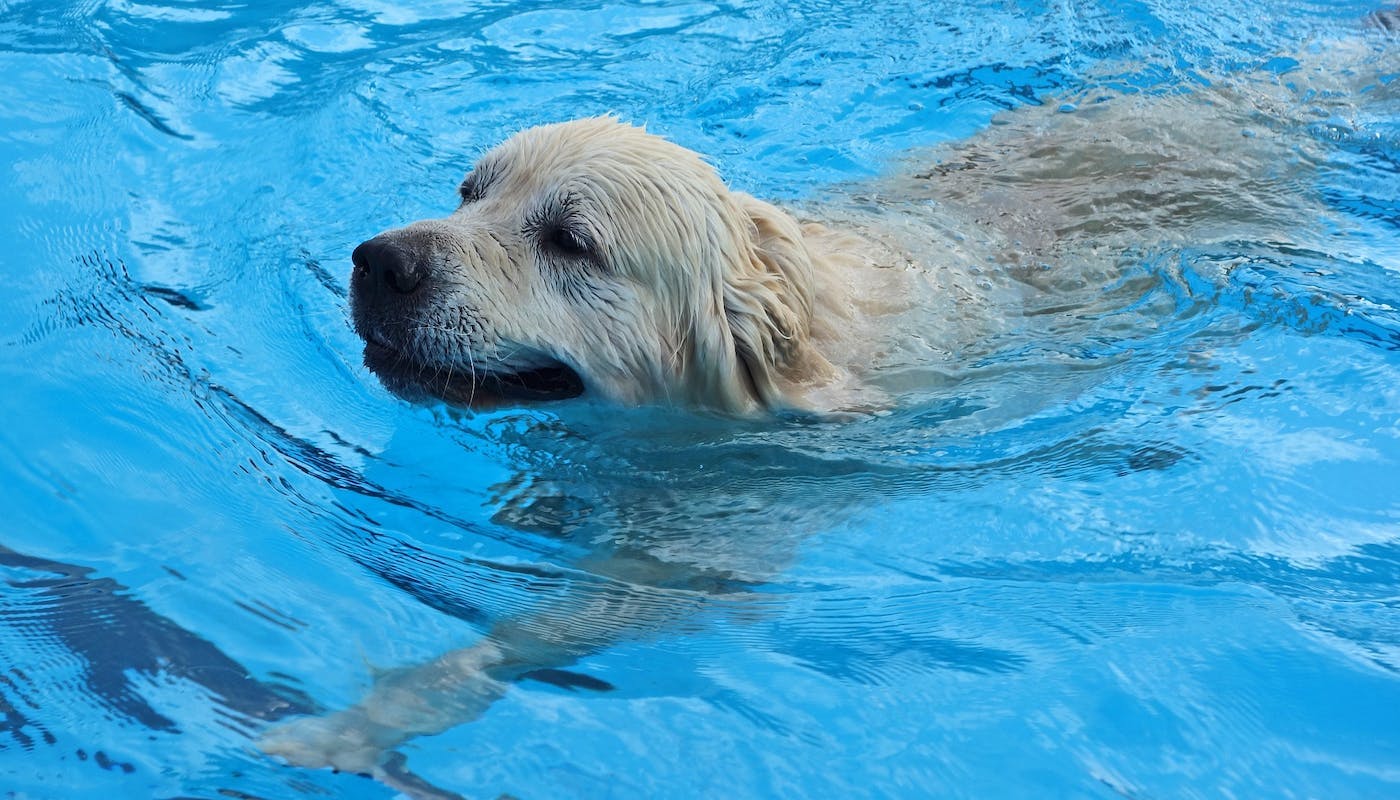Hydrotherapy for Dogs: Everything You Need To Know
Putting your pup in a tank of water? Apart from being totally adorbs, canine hydrotherapy is actually a very effective treatment that’s becoming more and more popular for dogs of all kinds. If you’re booking a session, don’t forget your camera.
What is Hydrotherapy?
Hydrotherapy (water therapy) involves swimming or walking in a tank of warm water, sometimes on a treadmill, and it’s become so popular that you can even obtain a qualification in it now.
It was horses who started it. Race-horses recovered and reconditioned by walking in water, then greyhounds got involved in the action, and now we’re treating our domesticated canines to the same therapy.
Exercising in water means that your dog is not bearing their full body weight, and that means that there is less pressure on their legs. This is a very gentle type of exercise that helps dogs to build up their muscles without hurting their joints and ligaments. Some people say that for dogs, a 5-minute swim is equivalent to a 5-mile run! Hydrotherapy can be surprisingly tiring for dogs; that’s why most therapy sessions will start with short bursts of swimming (interval training) while your dog gets used to it.
Ready to jump in? Hydrotherapy does not mean letting your dog into a swimming pool. Human pools aren’t designed to cope with that much fur! Hydrotherapy is carried out in special dog pools or tanks: underwater treadmills are suitable for dogs who need to increase their fitness, and pools are ideal for pain relief and enjoyment.
Conditions That Might Be Helped By Hydrotherapy
Be aware that dogs with cardiac conditions, diabetes or epilepsy may not be suitable candidates for hydrotherapy. In fact, like any form of treatment – complementary or otherwise – it’s best to book hydrotherapy only on referral from your vet. Hydrotherapy isn’t a one-stop solution. It’s a complementary therapy – if your dog has inflammation or an ongoing health condition, they’ll need a full treatment plan.
Is it right for your dog?
Canine conditions that might respond to hydrotherapy include:
- Osteoarthritis. It’s very common in dogs, particularly as they get older. Because hydrotherapy is low-impact, it’s a better form of movement than running around on hard ground.
- Rehabilitation after an operation. Water therapy is so gentle on limbs and muscles that it can help while they’re building up to pre-op levels. If your dog’s booked in for planned surgery (such as a hip replacement), hydrotherapy can help them to prepare for it, too.
- Injuries to the spine, legs, pelvis or ligaments. Ruptured ligaments are difficult to treat and hydrotherapy can provide support for them to heal.
- Muscle sprains. ‘Active rest’ is often recommended to help with muscle sprain, and hydrotherapy is a gentle type of movement.
- Hip dysplasia. It’s not a replacement but an addition to traditional veterinarian treatment. Hydrotherapy will build up muscle mass around your dog’s rear, supporting the hip joint.
How Much Does Hydrotherapy Cost?
In the US, an hour’s hydrotherapy costs around $50-60 at the time of writing this article.
Hydrotherapy isn’t just swimming – it’s supervised by a qualified therapist who will ensure that the speed and length of the session is right for your dog. Because it is controlled (using depth of water, speed of treadmill, and type of floatation vest), hydrotherapy is delivered very carefully according to your dog’s treatment plan.
Don’t forget that regular swimming (aka recreational hydrotherapy) can help your dog to build muscle to support their ageing joints. Actually, we think it’s a valuable form of movement for almost any dog, if they enjoy it... start them young and reap the benefits! Added bonus? Visiting a nearby lake or ocean won’t cost a dime.
How Can Hydrotherapy Help Dogs?
Will your dog enjoy a session of hydrotherapy? If you know your dog then you’ll know. At FoTP we have quite a few dogs who would love a go in a hydro tank! Hydrotherapy offers a range of health benefits to your dog, including:
- Increased fitness. This is helpful before or after an operation or as part of your dog’s recuperation from an injury.
- Pain relief. The water offers relief for dogs who are suffering from a condition like osteoarthritis.
- De-stress. Hydrotherapy can help with mental conditions too. For dogs with OCD or anxiety, warm water can be an amazing relaxant. It’s known to dilate the blood vessels, improving the flow of oxygen around the body and releasing feel-good hormones.
- Helping them to lose weight (if they’re obese). It’s a great part of an exercise programme, adding variety to keep your dog interested.
- Enjoyment! If your dog has always loved to swim, they’ll probably enjoy hydrotherapy (although they may be bewildered by the process at first).
Research About Hydrotherapy
So what do the scientists say about hydrotherapy? Well, it’s an emerging form of therapy, but business is booming. In their paper Evaluation of the Status of Canine Hydrotherapyhttps://www.researchgate.net/publication/51051675_Evaluation_of_the_status_of_canine_hydrotherapy_in_the_UK (UK, 2022), authors Waining, Young & Channon surveyed 89 British hydrotherapy centers. They found that 30% of hydrotherapy users were Labrador Retrievers. They also reported that the most common conditions seen at the hydrotherapy centers were ligament rupture (25%), hip dysplasia (24%) and osteoarthritis (18%).
There is more research on the topic of hydrotherapy for humans, such as this 2006https://pure.ulster.ac.uk/en/publications/the-effectiveness-of-hydrotherapy-in-the-management-of-fibromyalg-8 study which showed strong evidence that hydrotherapy reduced chronic pain for people with fibromyalgia.
Stiff Legs? Try A Supplement
Tired, aching legs are very common for older dogs, and it’s absolutely heartbreaking when your bouncy pup can’t jump up into the car any more. We created our supplement The One/products/the-one, designed to give your pup everything they need to keep them happy and healthy. Packed full of natural, healthy ingredients to help sooth their digestions, strengthen their immunity and help keep their joints resilient. If your dog is getting older, or is a breed that’s predisposed to osteoarthritis, we thoroughly recommend this supplement.
